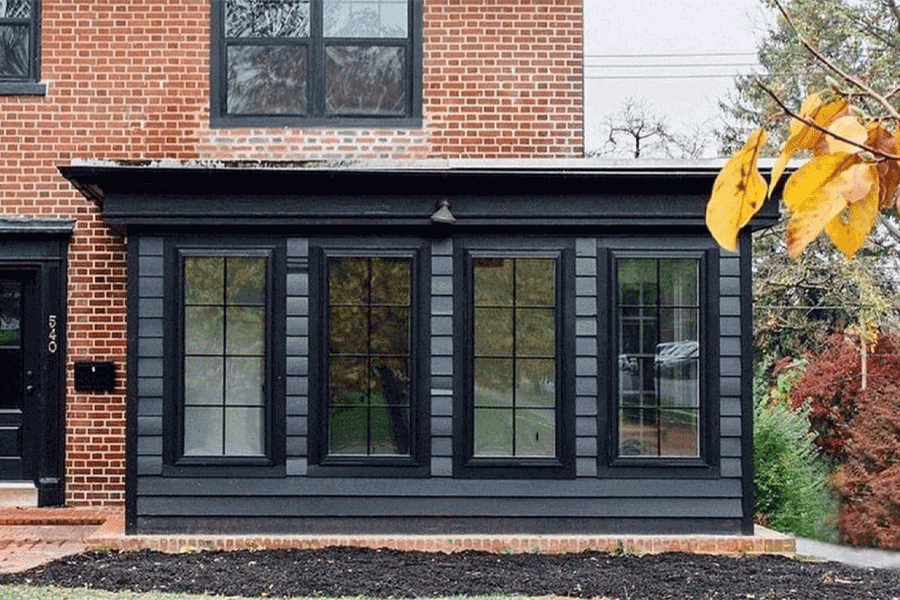Tips
How to winterize windows in 4 easy steps
Chilly weather is right around the corner. Before you hunker down for the season, take these simple steps to winterize your windows.
A little bit of window and door maintenance can go a long way toward keeping your home cozy and your energy bills in check all through the winter. Not only that, but regular maintenance can also help keep your windows and doors operating properly in the long run. Are you convinced yet? Let’s get started!
1. Put your windows to bed for the winter (i.e., clean them and store your insect screens)
Fall is an ideal time to clean. Not only does it give you a chance to remove the dirt, dust, and pollen that might have collected during the warmer months, but it will also help you make the most of your natural light before the dark season sets in.
Here’s our recommended process:
- Remove and clean your insect screens
- Clean your windows
- Store your insect screens upright or flat in a clean, dry area.
Tip: Properly storing your insect screens each season will help protect them from ice and other damage. For more detailed instructions, visit our Help Center.
2. Make sure windows and doors are properly sealed to limit drafts
Drafts can increase your home’s energy use each year. Check on the insulation of your windows and doors by taking these three simple steps:
- Inspect weatherstripping for any leaks and replace any that show gaps, damage, or permanent compression. Find more information on replacing your weatherstrip, here.
- Fill any additional air gaps around the window with sealant.
- Make sure all windows and doors are fully closed and locked. Windows that are closed and locked provide a tighter seal and greater energy efficiency.
3. Control window condensation by reducing humidity
Condensation appears when warm, moist air meets cooler surfaces, like a cold drink in the summer or your window on a cold winter’s day. Condensation on your window’s interior can block the view, drip on the floor, or freeze on the glass. If you’re noticing any of these issues, it’s not a sign your windows are failing. It’s a sign the humidity levels are too high inside your home (30 to 35% is recommended during the winter months). Check your thermostat or buy an inexpensive tool called a hygrometer to see your humidity levels.
Here are a few ways to reduce indoor humidity:
- Check your ventilation.
- Use a dehumidifier.
- Turn the humidifier on your furnace down (or off).
- Keep blinds or curtains open during the day.
- Leave ceiling fans on to promote air movement.
- Use an exhaust fan in bathroom areas when showering.
Tip: It's important to note where condensation is appearing. If you notice fog in between the panes of glass on a dual-pane window, it’s a sign of seal failure and an indication that you need to replace the window.
4. Invest in long-term solutions
If you’re ready for a more permanent solution, window replacement can help reduce costs on your monthly energy bills, improve the comfort of your home, and even increase real estate value — realtors agree that Andersen® windows and doors increase the value of a home by at least 15%.*
Plus, windows and doors can be installed at any time — regardless of the season.
- ENERGY STAR® certified windows will not only improve the comfort of your home year round, they will also reduce your monthly energy bills by an average of 12% compared to non-certified products. ENERGY STAR windows reduce both heating and cooling costs through the use of climate-specific glass options.
- Andersen® Narroline® conversion kits are a great option if your home has Narroline double-hung windows that were made from 1968 to 2013.These double-hung conversion kits can turn older windows into convenient, tilt-wash double-hung windows with high-performance Low-E4® glass that’s 45% more energy efficiency in the winter months.** To identify if the products in your home are Narroline windows, use our Identify Your Product tool.
- Windows that aren’t properly installed can increase your home’s energy use each year, leading to inflated energy bills and overworked HVAC systems. Consider utilizing an Andersen Certified Contractor or Renewal by Andersen for your upcoming project to make sure installation is done properly.
*2022 Andersen brand survey of U.S. realtors and their experience for the homes they sell
**Winter values are based on comparison of Andersen® double-hung window conversion kit U-Factor to the U-Factor for clear dual pane glass non-metal frame default values from the 2 2006, 2009, 2012, 2015 and 2018 International Energy Conservation Code "Glazed Fenestration" Default Tables.
